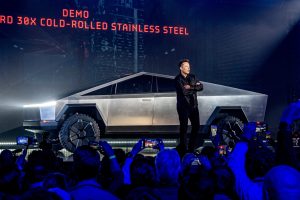- 🔊 Dodge’s parent company, Stellantis, plans to add simulated gas engine noise and vibrations to its upcoming Charger Daytona EV.
- 🚗 The simulated engine rumble aims to enhance pedestrian safety by making the EV audible and providing tactile feedback.
- 📡 The system, including Active Vibration Enhancement (AVE) and Active Sound Enhancement (ASE), utilizes sensors and haptic points on the EV’s body to create the effect.
- ⚙️ Factors such as accelerator pedal position, motor speed, and torque will influence the noise generated by the ASE and AVE systems.
- 🛠️ Stellantis also employs the Exhaust Sound Enhancement system, which uses external speakers to mimic a traditional exhaust sound.
- 🚀 Stellantis recently unveiled the STLA Large EV platform, expected to feature in upcoming Dodge and Jeep electric vehicles.
- 📅 Dodge announced plans for the Charger Daytona EV in 2022, aligning with its shift toward EV development and discontinuation of gas-powered models.
As the automotive industry continues its rapid evolution towards electric vehicles (EVs), manufacturers are exploring innovative ways to bridge the gap between the familiar experience of traditional gas-powered cars and the quieter world of electric mobility. Dodge’s parent company, Stellantis, is making headlines with its plans to introduce simulated gas engine noise and vibrations to its upcoming Charger Daytona EV, a move that aims to not only enhance the driving experience but also address safety concerns associated with silent electric vehicles.
The Need for Simulated Engine Rumble
Electric vehicles, known for their silent operation, pose a unique challenge for pedestrian safety. With minimal noise emitted, particularly at low speeds, pedestrians, especially those with visual impairments, may struggle to detect the presence of an approaching EV. Stellantis’s decision to integrate simulated engine rumble into the Charger Daytona EV serves a dual purpose: enhancing safety by making the vehicle audible and providing tactile feedback to the driver.
How It Works: Active Vibration Enhancement and Active Sound Enhancement
The technology behind the simulated engine rumble involves sophisticated systems known as Active Vibration Enhancement (AVE) and Active Sound Enhancement (ASE). These systems utilize a combination of sensors and haptic points strategically placed throughout the EV’s body to create a convincing illusion of a traditional gas-powered engine. Factors such as accelerator pedal position, motor speed, and torque influence the intensity and frequency of the simulated engine noise, ensuring a dynamic and immersive driving experience.
Beyond the Rumble: The Exhaust Sound Enhancement System
In addition to the simulated engine rumble, Stellantis employs the Exhaust Sound Enhancement system, adding another layer of authenticity to the driving experience. By utilizing external speakers and a tuned exhaust assembly, this system mimics the sound of a traditional exhaust, further blurring the line between electric and gas-powered vehicles.
Looking Ahead: The STLA Large EV Platform
Stellantis’s commitment to innovation extends beyond individual vehicle models. The recent unveiling of the STLA Large EV platform signals a broader strategic shift towards electric mobility across the Dodge and Jeep brands. This platform, expected to underpin future electric vehicles, represents a significant investment in the electrification of the automotive industry.
Conclusion
As the automotive landscape evolves, manufacturers like Stellantis are leveraging cutting-edge technology to redefine the driving experience. The integration of simulated engine rumble and advanced sound enhancement systems not only addresses safety concerns associated with electric vehicles but also enhances the emotional connection between drivers and their vehicles. With the STLA Large EV platform laying the foundation for future innovation, the journey towards sustainable and immersive electric mobility is well underway.





